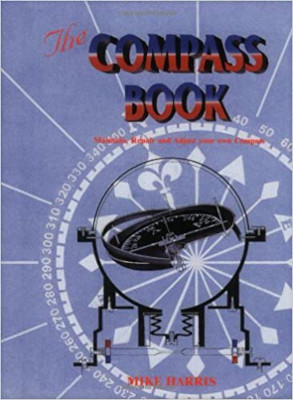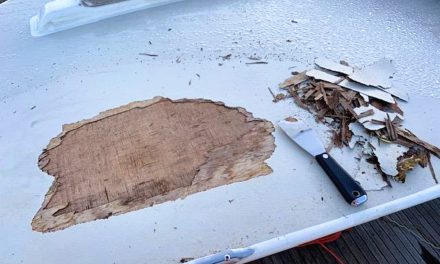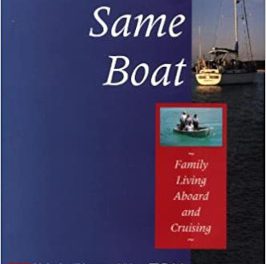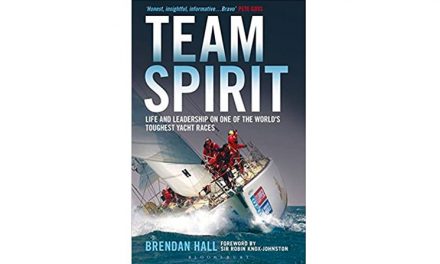 A while ago and some miles off Los Angeles Light, I was sitting in my boat with water over my shoes watching the remains of a breaking sea trickle out of the cockpit footwell. I remembered that dog hair slows the cockpit drains. I also saw that my GPS had salt water draining from the battery case. While both GPS and dog had remained on board during the mishap with a wave, only one of the two was sure to be the same following the bath. I looked at my compass with new respect and turned the boat toward home.
A while ago and some miles off Los Angeles Light, I was sitting in my boat with water over my shoes watching the remains of a breaking sea trickle out of the cockpit footwell. I remembered that dog hair slows the cockpit drains. I also saw that my GPS had salt water draining from the battery case. While both GPS and dog had remained on board during the mishap with a wave, only one of the two was sure to be the same following the bath. I looked at my compass with new respect and turned the boat toward home.
For those who find every now and then that they must use the steering compass as if they need it, The Compass Book will provide reassurance in quantifying the errors to be expected. For bluewater cruisers the question is simpler. Should a professional be paid to wring out the errors, or do they elect to do this job themselves? The do-it-yourselfers among us take away from the job comprehensive knowledge of what we have done. The increased skill and satisfaction which come with swinging and adjusting your own compass stems from the learned ability to re-check this calibration during normal navigation and how to repeat the compensation any time or place this becomes necessary. An iron engine block amidships, the hatch rails of the cabinhouse, the stainless steel tanks, and the standing rigging all deflect earth’s magnetic flux paths in ways which can be measured and amounts which can be compensated.
Author Mike Harris provides a clear and concise guide to measuring compass errors and to positioning compensating magnets (also, for a metal boat, the irons) so as to reduce these errors to negligible levels. Swinging the boat and adjusting the compass will take an afternoon, much of which is lost in waiting for still water, taking sightings, moving magnets, swinging the boat, and letting the compass settle to repeat these steps. During this process you’ll appreciate the simplicity of Harris’ diagrams and worksheets. The method can be applied whether internal compensating magnets are provided with your compass or not.
As I approached the harbor, my dog began singing softly with the fog horns. The main channel and the heavy channel traffic lay safely to port. Having allowed for the actions of the southbound California current, the following sea, and windage, I think I know why steering compass, autopilot fluxgate-compass, and GPS heading never agree. Having swung the steering compass myself, I knew with confidence that one of the three was correct.
The Compass Book by Mike Harris (Paradise Cay Publications, 1998)




